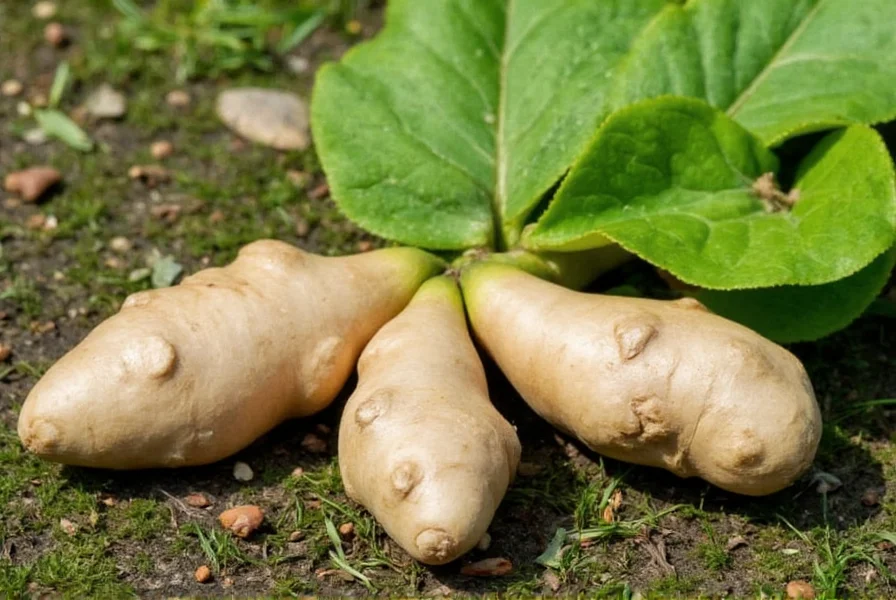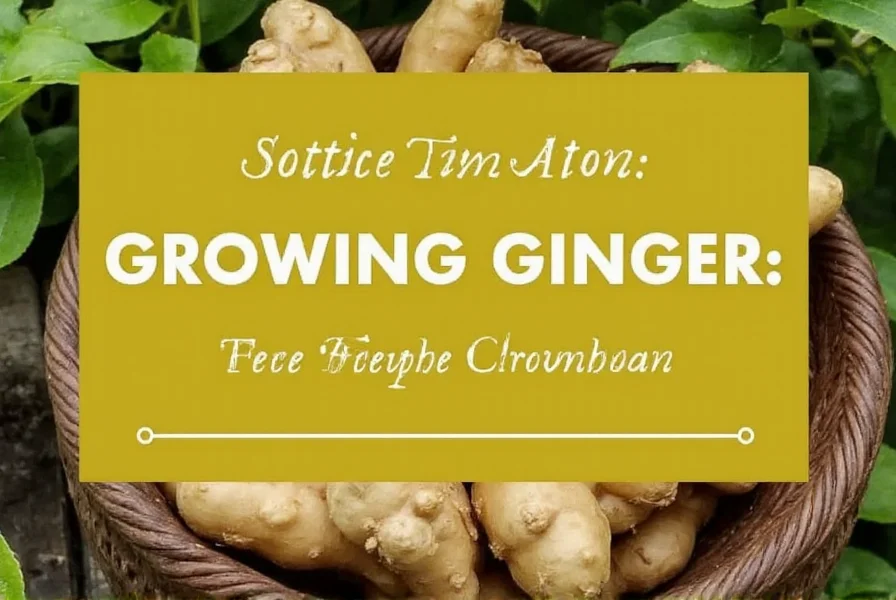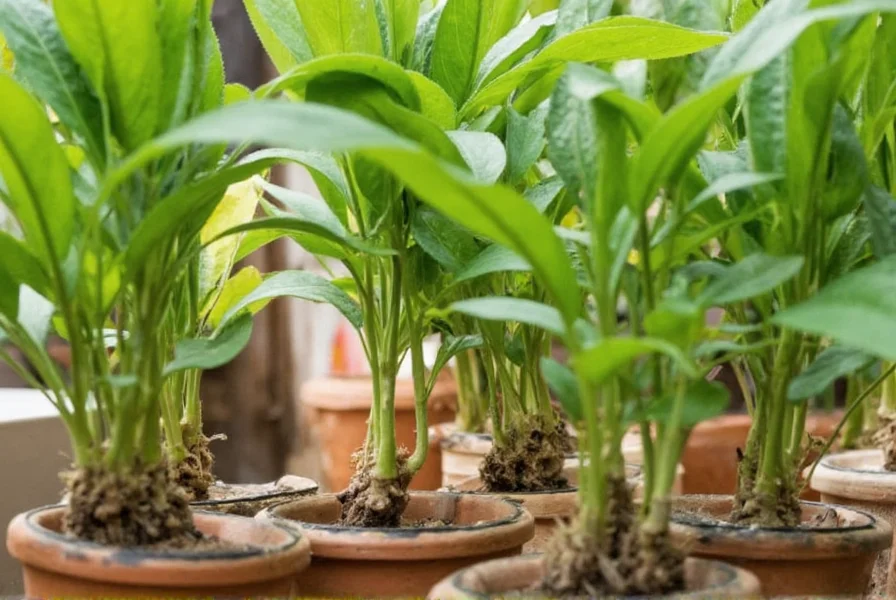Growing your own ginger offers superior flavor, freshness, and control over growing conditions compared to store-bought options. This tropical perennial, scientifically known as Zingiber officinale, thrives in humid environments with filtered sunlight and nutrient-rich soil. Whether you're working with a backyard garden in a warm climate or a container on a shaded patio, successful ginger cultivation follows specific principles that transform store-bought rhizomes into a continuous harvest of fresh ginger.
Understanding Ginger Plant Biology
Ginger isn't a root but an underground stem called a rhizome. This distinction matters because rhizomes grow horizontally and produce new shoots from 'eyes' or buds. The plant features narrow green leaves that grow in clumps up to three feet tall, with yellow-green flowers appearing in mature plants. Understanding this growth pattern helps optimize planting techniques for maximum yield.
Several ginger varieties work well for home cultivation:
| Variety | Characteristics | Best Growing Conditions |
|---|---|---|
| Common Ginger | Standard grocery store variety | Warm, humid climates; partial shade |
| Yellow Ginger | Milder flavor, golden interior | Container growing; consistent moisture |
| Blue Hawaiian | Distinctive blue tint, spicy flavor | High humidity; acidic soil |
| Indian Ginger | Strong aroma, high oil content | Long growing season; rich soil |
Step-by-Step Ginger Cultivation Guide
Selecting Quality Rhizomes
Start with plump, firm rhizomes showing visible eye buds. Grocery store ginger often contains growth inhibitors, so organic varieties work better for propagation. Look for pieces with multiple eyes to increase your chances of successful sprouting. Each planting section should contain 1-2 inches of rhizome with at least one eye bud.
Optimal Planting Conditions
Ginger requires specific environmental conditions to thrive. The ideal soil pH ranges from 5.5 to 6.5, slightly acidic to neutral. Amend your soil with compost and well-rotted manure to create the rich, loamy texture ginger prefers. Raised beds work exceptionally well for improving drainage in heavy soils.
For container growing, use a 12-14 inch pot with drainage holes filled with a mix of:
- 60% potting soil
- 30% compost
- 10% perlite or coarse sand
Planting Technique
Plant ginger rhizomes in early spring after the last frost. Place them with eyes facing upward, 2-4 inches deep depending on your climate (deeper in hotter regions). Space rhizomes 8-12 inches apart in rows 18-24 inches apart. Water thoroughly after planting but avoid waterlogging, which causes rot.

Watering and Maintenance Schedule
Ginger needs consistent moisture but hates soggy conditions. Water when the top inch of soil feels dry, typically 1-2 times weekly depending on climate. During hot summer months, increase frequency but always check soil moisture first. Mulch with straw or shredded leaves to maintain consistent soil temperature and moisture levels.
Fertilize monthly with a balanced organic fertilizer (10-10-10) during active growth periods. Reduce feeding as harvest approaches to allow rhizomes to mature properly. Ginger typically requires 8-10 months from planting to harvest, with most varieties ready when leaves yellow and die back.
Common Growing Challenges and Solutions
Ginger cultivation presents several challenges that home growers frequently encounter:
- Rhizome rot: Caused by overwatering or poor drainage. Solution: Improve soil structure with compost and perlite, and water only when top inch of soil is dry.
- Leaf spot diseases: Fungal issues appearing as brown spots. Solution: Remove affected leaves immediately and apply neem oil solution weekly.
- Spider mites: Tiny pests causing stippled leaves. Solution: Spray plants with strong water jets and apply insecticidal soap.
- Slow growth: Often due to insufficient nutrients. Solution: Apply balanced organic fertilizer monthly during growing season.
Harvesting and Storage Techniques
You can harvest ginger at different stages:
- Young ginger: After 4-5 months for tender, mild-flavored rhizomes with thin skin
- Mature ginger: After 8-10 months for full flavor development and thicker skin
To harvest, carefully dig around the plant's base and lift the rhizomes. Cut what you need and replant the remainder with at least one eye bud for continuous growth. Fresh ginger stores for 2-3 weeks in the refrigerator or up to 6 months when frozen. For long-term storage, preserve ginger in vinegar or dry it for powder.

Advanced Growing Strategies
Experienced growers use several techniques to maximize ginger production:
- Succession planting: Plant new rhizomes every 4-6 weeks for continuous harvest
- Partial harvesting: Take only portions of the rhizome cluster while leaving the plant intact
- Indoor winter cultivation: Move container plants indoors when temperatures drop below 50°F (10°C)
- Propagation from cuttings: Divide healthy rhizomes with multiple eyes for faster expansion
For gardeners in cooler climates, growing ginger in containers provides complete environmental control. Move pots to shadier locations during summer heat waves and bring them indoors before first frost. Container-grown ginger typically yields smaller but more flavorful rhizomes due to controlled growing conditions.
Frequently Asked Questions About Growing Ginger
How long does it take to grow ginger from planting to harvest?
Ginger typically requires 8-10 months to reach full maturity for harvest. You can harvest young ginger after 4-5 months for a milder flavor and more tender texture, but maximum flavor development and size occur at the 8-10 month mark when the leaves begin to yellow and die back naturally.
Can I grow ginger indoors year-round?
Yes, ginger grows well indoors when provided with bright, indirect light, consistent moisture, and temperatures between 70-85°F (21-29°C). Use a container at least 12 inches deep with excellent drainage, and maintain humidity levels above 50% by misting plants or using a humidity tray. Indoor ginger typically grows more slowly but can produce harvestable rhizomes in 10-12 months.
Why are my ginger leaves turning yellow?
Yellowing ginger leaves can indicate several issues: overwatering (most common cause), nutrient deficiency, insufficient light, or natural senescence as harvest time approaches. Check soil moisture first - ginger prefers consistently moist but not soggy conditions. If soil is too wet, reduce watering frequency. If leaves yellow late in the season, this likely signals maturity and readiness for harvest.
What's the best way to store harvested ginger?
Store fresh ginger in the refrigerator's crisper drawer for 2-3 weeks. For longer storage, place unpeeled ginger in a sealed container with a paper towel to absorb excess moisture. Ginger also freezes well for up to 6 months - simply peel, slice, and store in freezer bags. Drying ginger for powder preserves it indefinitely when stored in an airtight container away from light.
How do I know when ginger is ready to harvest?
Mature ginger shows several harvest indicators: the leaves turn yellow and begin to die back, the stems become less rigid, and the soil around the plant may show slight cracking from rhizome expansion. For precise timing, count 8-10 months from planting date. You can also gently dig near the plant's base to check rhizome size - mature ginger should have well-developed segments with tight skin.











 浙公网安备
33010002000092号
浙公网安备
33010002000092号 浙B2-20120091-4
浙B2-20120091-4